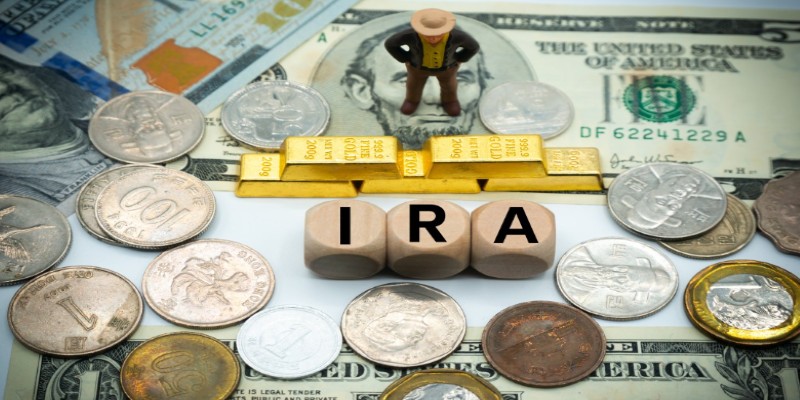Theoretical logic of balance sheet recession
The logic of the balance sheet recession is relatively simple. When the economy is in an upward cycle, optimism permeates the entire market. Enterprises in the economy borrowed and accumulated a large amount of debt. In the process, asset bubbles appeared in some areas (real estate, stocks). Due to policy or other reasons, the asset bubble was punctured, and the balance sheet of the enterprise holding the bubble asset was severely impacted. The asset side shrank significantly, but the liabilities did not change significantly, and the enterprise became insolvent, which led to the technical bankruptcy of the enterprise. In order to repair the balance sheet as soon as possible, enterprises will suppress the increase in debt and speed up the repayment of debt. Because enterprises no longer actively borrow, this makes the monetary policy effect of stimulating the economy by lowering interest rates and providing liquidity greatly compromised. The direct inference of this phenomenon is that fiscal policy should play a positive role, and the government should take the initiative to borrow debts and increase spending, so as to avoid the economy from falling into a debt-deflationary cycle.
The key to the establishment of the theory of balance sheet recession is the transformation of business objectives from maximizing profits to minimizing liabilities. Gu Chaoming used the cycle of yin and yang to describe the change of business objectives. In the positive cycle, the goal of the enterprise is consistent with the assumptions in economics textbooks, pursuing profit maximization. But in the negative cycle, the theory of balance sheet recession overturns this assumption and believes that in the case of insolvency, The primary goal of an enterprise is to repay debts as soon as possible and restore the balance sheet to a normal state, rather than continue to borrow and invest and increase profits.

The premise of the balance sheet recession
A balance sheet recession is clearly different from other types of recessions. Historically, the frequency of balance sheet recession is not high, and certain conditions need to be met before a balance sheet recession occurs, specifically:
One is that enterprises in the economy have to accumulate a large amount of debt in the early stage. A relatively large scale of corporate debt is a necessary condition for a balance sheet recession. If the scale of corporate debt is small or there is no debt, even if the assets shrink, there will be no insolvency and no balance sheet recession.
Second, the bursting of the capital bubble has had a huge impact on corporate balance sheets, causing technical bankruptcy, and the coverage of technical bankruptcy must be large enough. Another necessary condition for the occurrence of a balance sheet recession is that there must be more bubble assets on the enterprise’s balance sheet, and the burst of the bubble seriously affects the balance sheet. In addition, a small number of enterprises will not have a balance sheet recession if there is a problem with their balance sheets, because other enterprises can also borrow and invest normally, and a small number will not affect the whole. But if most, for example, more than 95% of the corporate balance sheets have problems, then there will be a balance sheet recession.

Third, the enterprise’s goals have changed, from maximizing profits to minimizing liabilities. Because there has been technical bankruptcy, the goal of the enterprise at this time is no longer to maximize profits, but to minimize debt. Even if borrowing business will help increase profit levels, enterprises will not borrow, because their main goal is to repay debts as soon as possible and reverse the technical bankruptcy, so as not to be affected by the market discovering that they have fallen into technical bankruptcy, such as bank collections of loans, rating agencies downgrade, etc.
It should be noted here that although the enterprise has insolvency, it is not caused by the operation of the enterprise. The actual business situation of the enterprise has not changed significantly. The product can still be sold normally, and there is no abnormal change in the flow of funds. It is just because of the assets. The fall in prices had a negative impact on the balance sheet.
Observe indicators of balance sheet decline
Happy families are similar, but unfortunate families have their own misfortunes. Compared with other types of economic recession, balance sheet recession has some obvious characteristics. Some economic indicators can be used to analyze whether the recession is caused by the deterioration of the enterprise’s balance sheet, and then take targeted measures to restore the economy.

First, the growth rate of the money supply (M2) has declined. Because enterprises were not motivated to increase debt during the balance sheet recession, instead they took the initiative to repay debts. Banks had difficulty in lending, which led to a decline in the growth rate of M2, which measures the credit situation in the economy, or even negative growth.
The second is an increase in the savings rate. In order to repay debts, enterprises will actively save. Compared with before the bubble burst, the savings rate in the economy has increased significantly.
The third is the corporate debt situation. In the case of a balance sheet recession, enterprises will actively repay their debts. After a period of time, the scale of corporate debt will decrease significantly. In other words, enterprises are actively deleveraging. However, when the enterprise’s balance sheet is repaired, the enterprise’s goal is to maximize profits, and the enterprise’s debt will continue to increase at this time.
Fourth, government bond yields have fallen. Since enterprises do not take the initiative to lend, unlisted funds are accumulated in the banking system. Banks are eager to find investment channels. Government bonds are an important choice. When there is too much money to buy government bonds, the price of the bonds will increase and the yield will drop sharply.

Ineffective monetary policy in the case of a balance sheet recession
Since many enterprises have experienced technical bankruptcy and are insolvent, their primary goal is to repair their balance sheets and minimize debt. Therefore, even if the interest rate is very low, the enterprise will not borrow. As an analogy says, you can lead a horse to the river, but you cannot force it to drink. The problem is on the demand side of funds, not the supply side. This is obviously the same as the lack of liquidity during the financial crisis, when liquidity was abundant at this time. Under this circumstance, the effect of monetary policy has fallen sharply. Even if the zero interest rate and quantitative easing monetary policies implemented by developed countries have little effect, the economy has fallen into a "liquidity trap" or "quantitative easing trap."
Balance sheet recession mainly studies the recession that occurs after the impact of non-financial corporate balance sheets. In fact, financial institutions also participate more in the financial market, and there may also be a large number of bubble assets on their balance sheets. After being hit hard, banking financial institutions will also take the initiative to repair their balance sheets, especially in the case of stricter supervision, there will be loan reluctance. In this way, the decline in the balance sheet of financial institutions will also have an impact on corporate financing from the supply side of funds.
In the case of a balance sheet recession, fiscal policy is required to take the initiative to absorb excess bank savings and borrow money from banks for expenditures, thereby stabilizing the economy. Even if the fiscal deficit and government debt scale expand, we will not hesitate to do so. If the fiscal policy does not act at this time, it will lead to a downward spiral in the economy.

For example, in the economy, income is US$100, expenditure is US$90, and savings are US$10. Under normal circumstances, enterprises will borrow $10 from the bank to invest, and the economy will reach equilibrium. But in the case of a balance sheet recession, if the enterprise no longer borrows, there will be a surplus of output, and output will decrease in the next year. If this process of austerity is not interrupted by fiscal expenditures, it will continue. What is more serious is that with the economic downturn, asset prices on corporate balance sheets will continue to fall, which will aggravate corporate balance sheet problems and worsen the balance sheet recession.
Although monetary policy is ineffective in stimulating the real economy, it still seems to be able to make a difference in promoting the prosperity of financial markets. Because the bursting of the asset bubble has an impact on the asset side of the enterprise’s balance sheet, then a direct idea is whether monetary policy can help enterprises repair their balance sheet in terms of asset prices? Loose monetary policy can promote asset prices, but there is a problem that is difficult to grasp. Monetary policy may once again trigger an asset bubble, leading to the reappearance of a balance sheet recession.

Monetization of fiscal deficits
The solution to the balance sheet recession is to make up for fiscal expenditures. The government raises funds by borrowing from banks or issuing bonds to increase expenditures to support the declining economy. This inference of the balance sheet recession seems to coincide with the monetization of fiscal deficits. Since the monetary policy has failed, or monetary policy can only be effective through fiscal policy, and the economy has entered the category of fiscal dominance, then The central bank's direct purchase of government-issued bonds seems to be a clearer choice, avoiding the tortuous process of borrowing from commercial banks by the government. The proponent of the balance sheet recession theory, Gu Chaoming, did not explicitly discuss the issue of fiscal deficit monetization. Perhaps because this issue is sensitive, it is easy to attract opposition. But if policymakers accept the theory of balance sheet recession, then they must be vigilant about the issue of fiscal deficit monetization.
Undoubtedly, the economy falling into a balance sheet recession requires the proactive action of fiscal policy, but there does not seem to be a clear rule to follow as to how fiscal expenditures should be made. Since there are no clear rules to follow, there are questions raised by some critics, whether the fiscal policy will distort the economy? Although fiscal expenditure has avoided a deep economic recession, will it worsen the economic structure, drag down future economic growth, and create new problems? When will large-scale fiscal expenditures stop?
There is a clearer answer to when large-scale fiscal expenditures should stop. When companies gradually resume borrowing, fiscal expenditures should be withdrawn gradually. But for other issues, it seems that it is not a good response. It can only be explained in a big way that the economy cannot be plunged into a debt-deflation cycle. Even if there are certain flaws in fiscal policy, it is preferable to a sharp decline in economic welfare.

How to prevent a balance sheet recession
A careful analysis of the preconditions for the occurrence of a balance sheet recession seems to be clear. The policy implications are to avoid excessive leverage in the economy, especially in the corporate sector, and to avoid asset bubbles in the economy, so as to maintain the balance sheet of the enterprises healthier. However, it is easier said than done. The development of enterprises in the modern economy relies heavily on debt, especially in the economic upward cycle, when the scale of corporate debt is getting bigger and bigger. For example, after the 2008 financial crisis, countries provided credit to stimulate the economy. After a period of time, the scale of global debt rose rapidly again. According to data from the Federal Reserve, as of the end of the third quarter of 2019, the debt of the non-financial corporate sector in the United States has reached 15.99 trillion US dollars, and the proportion of non-financial corporate debt to GDP is as high as 74%, which has exceeded the level before the 2008 crisis.
Asset bubbles are more difficult to prevent because it is difficult to recognize bubbles, let alone prevent bubbles. Generally, the existence of bubbles will be recognized only after the bubble bursts. When there is no agreement on whether an asset bubble occurs, it is difficult to introduce a policy to deal with it. In particular, finance is playing an increasingly important role in the economy, and the direct result of financial spree is asset bubbles. Many past crises have shown that people do not seem to have learned much from the crisis. Optimism will once again prompt people to enter the feast of inflating asset bubbles. The end result is that they are tortured by the crisis again.



